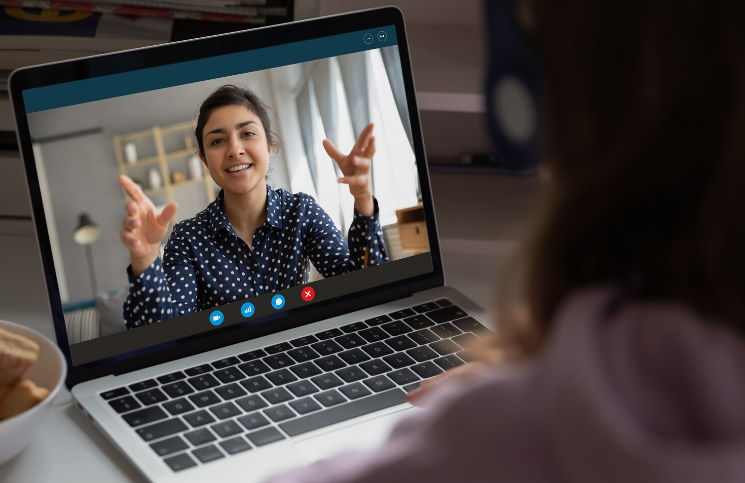by Gary Kaplan
Online communication has been with us since May 24, 1844, when Samuel F.B. Morse tapped out his first dots and dashes. Thirty-two years later, in Boston, Alexander Graham Bell summoned Mr. Watson with the first voice message carried over an electrical wire. Western Union transmitted a halftone photograph in 1921, and in 1927 Philo Farnsworth beamed the first live TV image. The cornerstones of online communication were in place. These founding fathers would be astonished at the ceaseless cacophony of voice, image and text that blankets the globe today in an impenetrable electronic cocoon.
Our adaptations to the mutations of online communication have been seamless. A couple of generations ago the telephone morphed from a medium of formality into one of intimacy. The teenage phone marathon was a generation-defining ritual. Things could be said in the Bell confessional that would be too embarrassing in person. The boundaries of disclosure were pushed out. Relationships blossomed and wilted over the wires. No one would have called those telephonic catharses impersonal.
McLuhan correctly understood media as extensions of human sensibility. What happens online does not stay online: it penetrates into the mind and heart. Communication is a two-stroke cycle of sending and receiving. Whether the engine is analog or digital, physical or virtual, the message is the message—the medium is only the box it came in. By now, we probably spend more time online than in face to face interaction.
Education is being forced to catch up with the evolution of the species. It isn’t a question of remote versus live: it’s an opportunity and an imperative to fuse remote and live into a new medium, a new form of pedagogy, a new extension of our sensibility.
JFYNet remote learning is an extension of JFYNet blended learning. Blended learning takes place in the classroom. It integrates online instructional content with teacher-delivered content. Our staff work hand in hand with teachers to analyze student performance data and shape curriculum and pedagogy to what the data tell us. Remote learning takes place entirely online. It also integrates online and teacher-delivered content and uses student data to shape instruction. The difference is that the teacher-delivered content is now online too, not face to face, and the interaction of students, teachers and JFY staff is also online.
But that doesn’t mean it’s impersonal. Our staff, our Remote Learning Specialists, are supporting teachers in the classroom now just as they did before March 17. The relocation of the classroom online means that teachers can reach out for help more easily and more frequently, and we can respond more immediately. Here’s one response to an emailed JFYNet student performance report:
-
Hi Cathie,
Thank you so much for your email. I trust that you and your loved ones are remaining healthy and safe?
I appreciate your feedback and the report regarding student performance. I know that many students have participated in the JFYNet readings and activities and have commented on how comfortable they are with the program, and I know that the teachers have been relieved to provide students with something that is easily accessible and helpful. 🙂
Messages like this go back and forth every day. We are communicating more frequently with our teachers than before the shutdown because they no longer wait for our scheduled school visit. Online, every day is a school visit. And our remote interactions are far from impersonal.
We will eventually return to the classroom. When we do, the educational practices we have developed during this period and the spontaneous communication patterns that have evolved will be the new normal. The classroom won’t look or sound radically different, but the content, the delivery, the interaction and the outcomes will all have been subtly transformed. Our experimental extensions will coalesce into new media. We may be surprised at the resulting new messages.
Afterthought: An Antidote to Alienation
Even as we focus on pedagogy and skill development, we should keep in mind that education serves more than a utilitarian function. Education is a culture-defining and socially unifying process. It establishes norms and values as well as teaching practical skills. Aristotle considered education the most important function of the state because it forms the character of the citizen. A few centuries later, Jefferson advocated publicly funded education because he knew that an educated populace is the foundation of democracy. In this time of social fragmentation, now aggravated by enforced social distancing, online communication performs a convening and bonding function. The interpersonal dimension of remote learning may offer a benefit even more crucial for our post-virus recovery than academic proficiency. It may offer an antidote to alienation.
Gary Kaplan is the executive director of JFYNetWorks
HOW ARE WE DOING? In our pursuit to serve up content that matters to you, we ask that you take a couple of minutes to let us know how we’re doing? Please click here to be navigated to our JFYNet Satisfaction Survey. Thank you!





